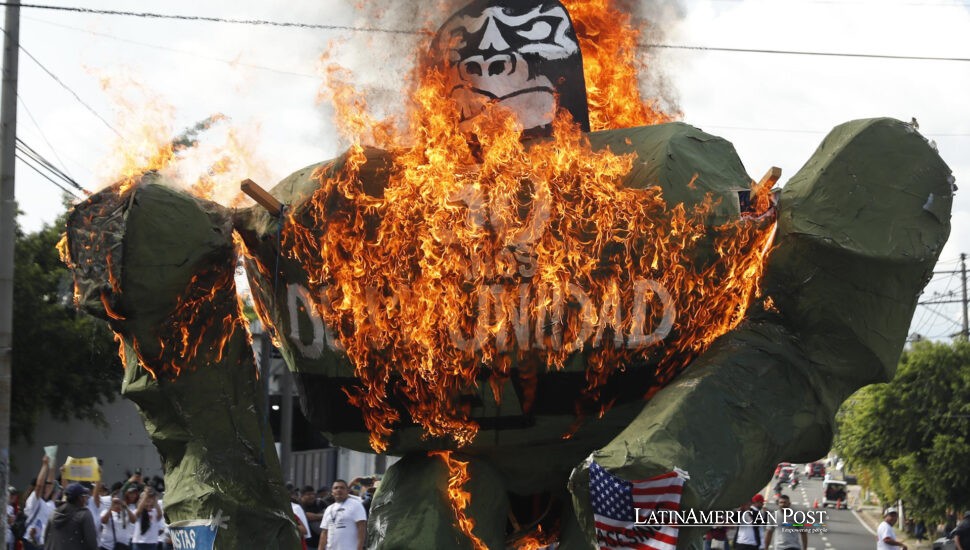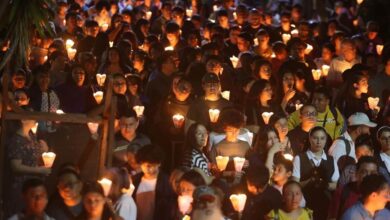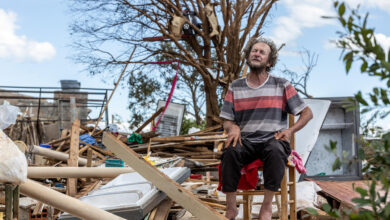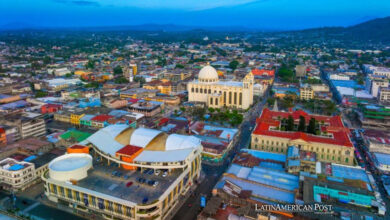El Salvador’s Student Massacre Still Haunts a Nation That Won’t Open Its Archives

Fifty years after gunfire tore through a student march in San Salvador, survivors like Mirna Perla still carry shrapnel in their knees and unanswered questions in their hearts—while the state continues to look the other way.
A Protest Born in the Shadows of Repression
It began in the early hours of July 30, 1975, when a handful of student leaders gathered on the campus of the University of El Salvador, already occupied by military forces. Just days earlier, troops had stormed the university in Santa Ana, trampling its constitutionally protected autonomy and sparking nationwide outrage.
That night, under the hum of low-flying aircraft dropping intimidation leaflets, a decision was made: they would march anyway.
“We knew it could cost us our lives,” said Mirna Perla, then a law student and now one of the few survivors willing to speak publicly. Sitting in the shadow of the same law faculty building where she once studied, she told EFE how the students prepared—not for violence, but for visibility.
By noon, nearly 2,000 students poured out of the university gates. Some wore school uniforms. Others hoisted hand-painted banners demanding an end to the military regime of President Arturo Armando Molina and his defense minister, Carlos Humberto Romero. The marchers planned to reach Parque Cuscatlán, in the heart of San Salvador.
They never got that far.
Ambush at Calle Arce
At 4:30 P.M., the column reached Calle Arce, near a highway underpass. There, armored vehicles and plainclothes agents blocked the route. What came next still plays on loop in Mirna’s memory.
First came the tear gas, thick and fast. Then, live fire.
“I remember the sound before I saw anything. Then people were screaming,” she said. Caught on the overpass with bullets slicing through the air, Mirna jumped—a desperate drop that fractured her left kneecap and knocked her unconscious with tear gas fumes.
The military quickly sealed off the street. Bodies were carted away in trucks. Blood was washed from the pavement. No official death toll was ever released. International observers later estimated as many as 100 students dead or disappeared—a figure Mirna believes is too low.
“They erased the evidence before anyone could count,” she said.
Friends dragged her into a mechanic’s garage, hiding beneath a truck until the shooting stopped. After dark, someone found the courage to drive her to a hospital, where doctors pieced her knee together with wire.
Memory Without Justice
Though the civil war wouldn’t erupt for another five years, the massacre on July 30 foreshadowed the brutal tactics and impunity that would define the 1980s. Families searched for loved ones in vain, warned to stay silent or risk becoming targets themselves.
Mirna finished law school on crutches. Years later, she would become a Supreme Court justice, using her position to document the very state abuses that once nearly killed her. Still, the case that changed her life remained untouched by the courts.
“For the state, we victims did not exist,” she told EFE.
In 2018, backed by the Jesuit-run Human Rights Institute at the Central American University, she filed a formal complaint, naming the massacre a crime against humanity. That file still sits idle. No arrests. No testimonies. No access to military archives.
“We will keep knocking on the door of justice until it opens,” she said.
What haunts Mirna most is not the pain in her knee, still laced with fragments of that afternoon. It’s the absence of acknowledgment. The silence. The fact that fifty years later, the story remains buried in bureaucratic dust is striking.
The Bridge, the Bullet, and the Memory That Won’t Fade
Every year, on July 30, survivors and young activists gather at the underpass where the massacre happened. It’s now known as the Puente de la Verdad—the Bridge of Truth. They lay flowers, read the names of the disappeared, and try to summon accountability from a system that continues to deflect.
The crowd is often multigenerational. Students who weren’t born during the Civil War walk beside graying professors who lived through it. They don’t just mourn the past—they warn the present. Many draw parallels between the militarized violence of 1975 and the crackdown-heavy policies of President Nayib Bukele, who has suspended civil liberties under his anti-gang security strategy.
“For many of us, 1975 explains why so many picked up weapons later on,” one historian said. “It shows why reconciliation today still feels incomplete.”
For Mirna, that day lives on in her limp, in her refusal to forget, and in the legal documents she keeps in her briefcase. She dreams of seeing the case reopened. Of forcing the military to release its sealed archives. Of honoring the classmates who never made it home.
Also Read: How Chilean Court Used Uber Receipts to Convict Tren de Aragua Leaders Redefining War on Crime
“The greater pain isn’t my knee,” she said. “It’s that those students’ dreams were never given a chance.”
El Salvador may have buried the victims of July 30, 1975, but their absence continues to echo through the country’s schools, courtrooms, and history books. As the years pass, the survivors grow older. The memory, though, remains young—kept alive by those unwilling to let a massacre fade into silence. Until justice speaks, the story will remain unfinished.





